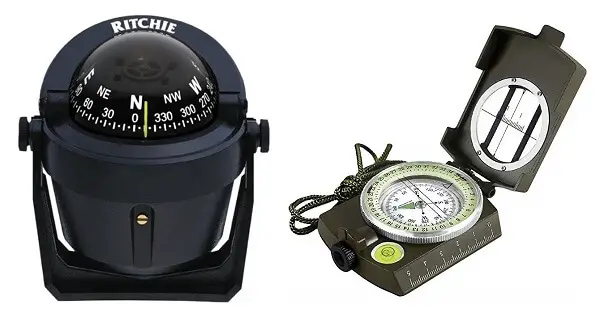5 Prepper Uses for Pine Sap was originally seen on http://totalsurvival.net
Could you live off of the land if you had to? For most people, the answer to this question is a hard no. But it doesn’t have to be a hard no for you.
Living off the land is all about using the numerous resources at your disposal to help yourself stay alive. One such resource that could be of high value to you is pine sap. In fact, pine sap is one of the most versatile natural resources in the world. The Native Americans used it often for a variety of purposes, and you can, too.
Want to save this post for later? Click Here to Pin It on Pinterest!
Today, we’ll go over what pine sap is, how you can procure it from a tree, and how to use it for survival.
What Is Pine Sap?
Pine sap is simply a secretion from pine trees. Sap will secrete from broken limbs or by cuts in the tree trunk. Basically, pine trees secrete the sap in order to seal damage done to the tree and help it heal.
When sap has been exposed to the air long enough, it will begin to harden and crystallize, but it can be softened by warming over a fire.
The term ‘pine sap’ is often used interchangeably with other terms such as pitch and resin. In reality, these three are not exactly the same thing.
Sap is the liquid form of a pine tree secretion, with a quality very similar to honey or syrup. It’s the initial form of the secretion.
Resin is the crystallized sap and the most hardened form it can take. It’s basically the direct opposite of the seeping liquid form of the sap.
Pitch is usually used to refer to the intermediate form in between the sap and the resin, where it’s more crystalized like the resin but still runny and viscous.
How Do You Collect Pine Sap?
Pine sap is not very difficult to collect. For example, if the sap has already spilled out of the tree and has hardened into resin or pitch, you can simply remove it physically with a knife or similar object. If you need it to be runny like syrup, you can heat it over a fire or a source of heat.
Specifically, look for broken branches on the pine tree or cuts on the tree. This is where the sap will be oozing out, because again, the pine tree is attempting to heal physical injuries.
Another method that you can use is to ‘tap’ the tree. Tapping the tree will do damage to it, and thus it can expose it to disease. Therefore, only tap the tree if you cannot find any other resin, pitch, or sap spilling out already.
In order to tap the tree, use a knife or hatchet or a machete to cut multiple lines in a twelve-inch line downward in the shape of a V. Place a metal container at the bottom of this V-shape. Sap will now begin to ooze out of the tree and will collect in the container. Leave the tree alone for several hours, and then come back to see the sap that you have collected.
What Are The Best Survival Uses For Pine Sap?
There is an abundance of survival uses for pine sap, including each of the following:
1. Bandage A Wound
Pine sap is already used by pine trees as a makeshift bandaid to keep the broken branches or cuts in the tree cut off to insects, pests, and other foreign infections. Therefore, who says you can’t do the same?
If you sustain a cut or a scrape in the wilderness, it will be vitally important to keep it sealed off from the outside in order to prevent infections. You can use sap as a bandage by applying it over over the site of the wound. Just make sure you have thoroughly cleaned the wound site as best you can before applying the sap.
On top of this, pine sap also has antibacterial properties. In other words, it will inhibit the growth of bacteria on the site of an open wound, regardless of whether you add a physical bandage or gauze pad. And because of its very sticky nature, the pine sap will also help slow down if not outright stop the flow of blood.
In this regard, pine sap will act as a bandage, stitching, and anti-bacterial ointment all at the same time. Pretty cool, right?
Besides cuts and scrapes, you can also use pine sap to help treat blisters and burns. Each of these will require the same level of attention.
2. Improve Breathing
Did you know that pine sap is edible? After all, you do eat syrup on your pancakes and waffles for breakfast, right?
In fact, in the colonial days, pine sap was used as medication. Resin would be mixed with water and then ingested to help prevent ulcers, breathing problems, and excessive coughing.
Take note that pine needles are often used to help make tea in the wilderness. Simply add the pine needles into the water so the water takes on their flavor.
One very critical note: Don’t just eat the sap the moment you collect it from a tree. It may not be safe to ingest right away. Instead, boil it first. This will remove any bacteria and impurities, just like how boiling water works.
Furthermore, boiling the sap will make it even more viscous, so it will be easy to ingest as well. Also, if you notice any negative reactions after ingesting the sap, stop immediately. It is wiser to only ingest a very small amount at first, and then work your way up from there.
3. Waterproof Clothes
Pine sap is completely invulnerable to water. As a result, it can be used to make objects far more resistant to water. If you have a backpack or a tarp with a tear in it, you can seal it shut with sap, and it will also keep water out. You can also use this method for shoes and boots.
Just make sure you always heat the resin to make it as runny as you can before applying it. Be careful here because resin is highly flammable, so don’t bring it too close to the fire. The best method would be to heat the resin over coals to bring it back to the runny form of the pitch.
4. Make Glue
This method would be obvious, but sap is incredibly sticky so it’s essentially nature’s form of glue. In fact, you can carry hardened resin crystals with you, and then when you need it as glue, you simply heat it over hot coals like we just discussed.
What are some instances where glue could come in handy? Several. You may need to harden the ends of spears, bolts, or arrows in order to keep them from splintering up. You may need to repair your clothing or backpacks, close a cut, or you may need to repair a shelter, to name a few different things.
5. Fire, Light, and Heat
As we mentioned, pine sap is incredibly flammable. If it’s raining or damp outside, and if you’re cold and wet and need to get a fire going right away, pine sap will work just like cotton balls and vaseline would. Apply pine sap over your kindling, then bring it into contact with a spark to convert it into a flame. Add more kindling and fuel, and you’ll have a fire going very quickly.
In this regards, you can also use pine sap as a torch. Simply take a stick, then wrap the top with a piece of cloth. Apply pine sap to the cloth, and light it up.
Conclusion
Many people may find tree sap to be annoying more than anything. While hiking or hunting, we’ve all had that experience where we rest our backs against a tree, only to later find the entire back of our shirt or jacket completely covered in sticky sap.
That being said, pine sap is far more of a blessing from nature than it is a curse, as this article has hopefully proven to you.
As one final piece of advice, make sure that you search for pine trees that are already damaged before collecting the resin or sap. This is because otherwise, you will have to tap or cut into the tree yourself, and this will only inflict damage that could leave it vulnerable to things such as disease or pests.
Like this post? Don’t Forget to Pin It on Pinterest!
You May Also Like:
This article first appeared on urbansurvivalsite.com
See it here
Learn More Here: 5 Prepper Uses for Pine Sap


![USGS Topo Maps Of Every Quad In The Continental US [Free Printable ] | https://survivallife.com/printable-usgs-topo-maps/](https://survivallife.com/wp-content/uploads/2016/12/420SL-Free-Printable-USGS-Topo-Maps.jpg)




